- Administrator
- Albums and Singles
 While the days of guitar maximalism are long in Cranes' past, Particles & Waves showcases a band who is doing a very good job when they attempt to recapture the stunningly haunting sound that drew so many fans a decade ago. On songs like "K56," and "Here Comes the Snow," Alison Shaw's piercingly high pitched voice is fragile and lonely, almost naked against the patient and pretty melodies. However, there are certain points where I simply cannot connect with the music.
While the days of guitar maximalism are long in Cranes' past, Particles & Waves showcases a band who is doing a very good job when they attempt to recapture the stunningly haunting sound that drew so many fans a decade ago. On songs like "K56," and "Here Comes the Snow," Alison Shaw's piercingly high pitched voice is fragile and lonely, almost naked against the patient and pretty melodies. However, there are certain points where I simply cannot connect with the music.
When Jim Shaw sings on "Every Town," every bit of attraction that was drawing me in begins to push me away. It's almost like this on "Avenue A," where mediocre lyrics don't make up for a mediocre tune. Fans of their French songs might find joy in the title track, and I'm completely sucked in by the swirling, repetitious melody of "Astronauts." I'm on the fence with the songs "Streams," and the closer, "Light Song," as they aren't as clear cut as the rest. It's as if they're in a struggle, trying to find a balance between guitar, piano, and electronic interplay with Alison's vocals. The dissonances almost work but I'm just not completely sold. Sound effects don't quite make up for what seems like an instrument is missing. This is somewhat representative of the album as a whole. Being on a major label, then a relatively large minor label, then dropped can have a wide range of effects on the music of an act who decides to continue: either the band can go back to the drawing board and reinvent themselves, return to the sound that drew attention in the past, or continue down the path of making things even less accessible and marketable than before. Some of these paths work for some while others work for others. In the case of Cranes, it seems as if they are trying to find which path they're going to take. There's a lot that works on this album, but an undeniable amount which doesn't. The stuff that does work is good enough to prove that Cranes can't be written off yet, and there's plenty more still to anticipate from the group.
samples:
 
Read More
- Administrator
- Albums and Singles
Everest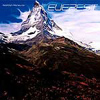 Having one or two good songs sandwiched between pointless exercises inmelodic looping is quite frustrating. Even worse is when a minute totwo minutes of a song are utterly captivating while the rest of itsimply seems like an effort to move up a very steep hill. Locatedsomewhere in the middle of this messy album is a vacuum of badproduction that consumes all of the stumbling rhythms and accentuatesthe rather flat and circular melodies. I'm never quite sure which I'msupposed to be listening to more and a complete lack of dynamics in thesong-writing only makes the banality of Heimlich Maneuverall the more blinding. For example, near the end of the album"Faulhorn" begins to resonate above and beyond the routine that hasbeen the entirety of the album; but as the song progresses, it becomesobvious that what I'm dealing with is actually a sonic cock-tease. As abass line and regiment of percussive sounds march into the piece,everything begins to blend together into a murky soup. Repeat andrecycle and a large portion of the album is enumerated and elucidatedas much as is possible within the realms of boredom. "Ro3" and "Dex"both flaunt a predisposition towards excellence and, to some extent,"Dex" actually succeeds. Maybe the track's short running time has alittle bit to do with its success or maybe it's because Everest don'tbother with adding layers of unnecessary instrumentation andornamentation. Everest work best on a simple and direct basis: anyexuberance or decoration kills the mood they can develop with solittle. "Falke," when it begins, rolls like a gorgeous thunder andcontinues to do so without being stuffed full of spiffy effects orabrupt changes in thematic direction. Even if the band could escapetheir inability to keep everything within a creatively controllablespace, they'd have to deal with the monotonous tone of the album as awhole. Many of their warm and welcoming synth tones feel rehashed bythe time "Channel Sky" cuts out. There's something lovable about thisrecord, but it's ultimately just another example of how to loop beatsand melodies ad nauseam. To be fair, there are a few tracks thatcould've made up the contents of a beautiful little EP, but within theconfines of the rest of the album they suffer considerably.
Having one or two good songs sandwiched between pointless exercises inmelodic looping is quite frustrating. Even worse is when a minute totwo minutes of a song are utterly captivating while the rest of itsimply seems like an effort to move up a very steep hill. Locatedsomewhere in the middle of this messy album is a vacuum of badproduction that consumes all of the stumbling rhythms and accentuatesthe rather flat and circular melodies. I'm never quite sure which I'msupposed to be listening to more and a complete lack of dynamics in thesong-writing only makes the banality of Heimlich Maneuverall the more blinding. For example, near the end of the album"Faulhorn" begins to resonate above and beyond the routine that hasbeen the entirety of the album; but as the song progresses, it becomesobvious that what I'm dealing with is actually a sonic cock-tease. As abass line and regiment of percussive sounds march into the piece,everything begins to blend together into a murky soup. Repeat andrecycle and a large portion of the album is enumerated and elucidatedas much as is possible within the realms of boredom. "Ro3" and "Dex"both flaunt a predisposition towards excellence and, to some extent,"Dex" actually succeeds. Maybe the track's short running time has alittle bit to do with its success or maybe it's because Everest don'tbother with adding layers of unnecessary instrumentation andornamentation. Everest work best on a simple and direct basis: anyexuberance or decoration kills the mood they can develop with solittle. "Falke," when it begins, rolls like a gorgeous thunder andcontinues to do so without being stuffed full of spiffy effects orabrupt changes in thematic direction. Even if the band could escapetheir inability to keep everything within a creatively controllablespace, they'd have to deal with the monotonous tone of the album as awhole. Many of their warm and welcoming synth tones feel rehashed bythe time "Channel Sky" cuts out. There's something lovable about thisrecord, but it's ultimately just another example of how to loop beatsand melodies ad nauseam. To be fair, there are a few tracks thatcould've made up the contents of a beautiful little EP, but within theconfines of the rest of the album they suffer considerably.
samples:
Read More
- Administrator
- Albums and Singles
Strange Attractors Audio House
samples:
Read More
- Administrator
- Albums and Singles
THE SLAVES
Ocean On Ocean
2LP/DL The Helen Scarsdale Agency HMS023
Release date: November 27
http://soundcloud.com/helen-scarsdale
The mystical drone-folklorist Jon Porras introduced us to the luminous sound of The Slaves, so we thought it fitting that he should expound upon their radiant shoegazing heaviness. Here speaks Mr. Porras:
"A shadow moves beneath the water. Ocean On Ocean: two abysmal surfaces echoing into one another. Mutually reflecting an endless geologic score to a post-apocalyptic litany. Planes of ambivalence obliterated by light, voices eclipsed by devotional low end, synthesized stereography spiraling from an eternal core. Hovering above the weighted disposition of Doom and below the consolation of Shoegaze, the duo transmit a burdened grace that unfolds like a radiant mammal writhing in black water. We discover an object heavy and obtuse until placed into the sea. Lines of light swell and dissipate behind hushed lyrics. Feedback and whitenoise ebb and flow, the mammal's breath hollowed, tumbling below the surface. The hum offset and displaced by water that surrounds. Holographic accord materialized by invalidated hopefulness. We are unsure and skeptical of what this optimism holds. What lies waiting at the depths carved between these two reflective surfaces? Ocean On Ocean implies a tangible province exists between these mirrored planes. A staircase built from reflective feedback, extending horizontally into bliss. A bliss that is fleeting and simultaneously petrified in the present. A paradox realized by the duo's distillations of urgent ambiance and luminescent melancholy. Conjuring environments that billow out from instrumental restraint, Ocean On Ocean is an exercise in disciplined abstraction.
Initially a cd-r, Ocean On Ocean reaches its supreme possibility today. An acoustic artifact cast into alchemical tangibility, these recordings are finally at peace on vinyl. Now the relics hidden between these Oceans can be crystallized."
The Slaves are BARBARA KINZLE and BIRCH COOPER, who hail from Portland, Oregon and who have released other works on Digitalis and Paradigms to considerable acclaim, drawing favorable comparisons to the likes of Grouper, Slowdive, Earth, and Barn Owl.
Limited to 400 copies. Remastered for vinyl by James Plotkin. Cut at 45RPM.
Read More
- Administrator
- Albums and Singles
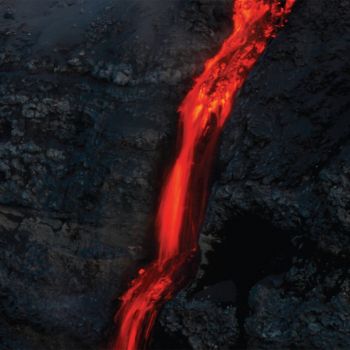 Off/On is a small but important step forward for Forma. Compared to the eponymous release from last year, it is similar in its sonic trappings, but for a group whose whole identity is fixed around nostalgia for kosmische synth loops and drum machine motorik beats, this record demonstrates how they can grow beyond their influences. The signature sound of the group is fleshed out in greater layers, with better production, and teems with hopeful optimism on its standout songs, hinting at an ambitious streak about to surface.
Off/On is a small but important step forward for Forma. Compared to the eponymous release from last year, it is similar in its sonic trappings, but for a group whose whole identity is fixed around nostalgia for kosmische synth loops and drum machine motorik beats, this record demonstrates how they can grow beyond their influences. The signature sound of the group is fleshed out in greater layers, with better production, and teems with hopeful optimism on its standout songs, hinting at an ambitious streak about to surface.
Forma's visual aesthetic hints at the sound. Their first album's cover was a wordless, sandy expanse of desert, shadowed at its half by higher ground. It was cosmic and terrestrial too, ceding to an obsession with simplicity and minuscule details. Meanwhile, Off/On looks like a cropped cover from an edition of National Geographic, again wordless and bare, but with a river of red-hot magma splitting apart a dark crust of volcanic earth; some exposed vein of molten light set flowing.
Each song carries a certain unique timbre based around which interesting effects the group can extract from their abundance of equipment. The eponymous "Off/On" transforms a propulsive beat and bassy arpeggios into spaced-out dark disco. "Mécanique" is the most impressive song off the record, a near-spiritual successor to Kraftwerk's "Europe Endless," which bursts open into a miniature epic over the course of its eleven minutes. Laid smack in the middle of the record with no forewarning, this is a brilliant moment of clarity, and one of my favorite songs of the year. The rest of the album, meanwhile, blurs together into a pleasant haze, successfully pairing scarce rhythms and pristine electronics, closely resembling a soundtrack to the most beautiful educational program ever produced.
As last time, all of these pieces (apart from the two mentioned above) go under the designation of "Forma" followed by a kind of catalog number. I assume Forma's decision to name their similar songs like this is a purposeful move; their similar structures aren't due to a lack of ideas so much as a desire to perfect one or two. These ideas are fine as is, and it is good to hear them manifest in new ways on each record, but I can't deny the impact of a song like "Mécanique." This is an accomplished piece which melds pop and heady futurism so well it escapes the rest of the record. I hope to hear this territory explored more often.
samples:
Read More
- Administrator
- Albums and Singles
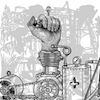 Despite his seeming obsession with angels (just look at the list of titles of Earth’s albums and songs), Dylan Carlson’s current obsession with fairies and the occult history of England came as a bit of a surprise. Images of him playing fey faux folk music in tights came to mind but I decided to give him the benefit of the doubt. I am glad I did as his drcarlsonalbion project is turning out to be just as intriguing as his work with Earth.
Despite his seeming obsession with angels (just look at the list of titles of Earth’s albums and songs), Dylan Carlson’s current obsession with fairies and the occult history of England came as a bit of a surprise. Images of him playing fey faux folk music in tights came to mind but I decided to give him the benefit of the doubt. I am glad I did as his drcarlsonalbion project is turning out to be just as intriguing as his work with Earth.
 
A few weeks ago, Carlson played a show here in Dublin devoted to this new direction and, unfortunately, it seemed like a mess. Using pre-recorded beats and too many effects on his guitar, I felt it was self-indulgent and a major misstep for an artist who has been so consistently brilliant over the last 20 years. Above all, I was regretting having pre-ordered this release (and the Kickstarter for the forthcoming drcarlsonalbion album). However, when these 7" singles finally arrived, I was completely taken aback by how good they were.
The first of the two discs feature poetry written and recited by Rosie Knight (the Hackney Lass). Combining epic Greek imagery with a story of a broken home and foster care, "Hackney Iliad" is a powerful and moving work by Knight. Carlson’s guitar, instead of competing with Knight’s voice, pushes further into the foreground. On the other side, "Tyler’s Hand of Glory" is the story of a man who stumbles across hidden knowledge which starts him upon a path of occult learning and chasing successful suicides on a police scanner. The obsessive nature of the protagonist is frightening in itself and, crucially, it is never clear whether this magic is something real or his own madness. There are echoes of William Blake’s hallucinatory visions, unsurprising given that Carlson has touched previously on Blake with his work with Earth (particularly on 2005’s Hex ).
The second disc features two instrumental versions of these two poems set to music. Carlson’s guitar is still bathed in effects (a lot of tremolo, even compared to what he was using with Earth at the height of their dark country phase) but here the tone is more appealing than whatever he was using at the Dublin show. Intricate but slow, his style has moved on from his work on recent Earth albums though it is still recognizably him. The ringing drones and hazy melodies flow into each other like tributaries into a large, ponderous river (perhaps the Thames given Carlson’s current interests).
Based on this, Carlson’s excellent cassette of field recordings released on The Tapeworm earlier in the year and the new Latitudes session EP that has just come out (review coming soon), my fears about how Carlson has literally gone away with the fairies seem to be completely unjustified. With any luck, he will synthesize the three different approaches utilized on these three releases and create something utterly supernatural.
 
 
Read More
- Administrator
- Albums and Singles
 A combination of esoteric neofolk and electronic experimentation, Circulation of Light (Nathaniel Ritter of Kinit Her and Burial Hex, among others) sits nicely between those two genres. While I tend to find artists who overly favor one end of those two poles monotonous over time, Acheiropoeita does not have that problem in the slightest.
A combination of esoteric neofolk and electronic experimentation, Circulation of Light (Nathaniel Ritter of Kinit Her and Burial Hex, among others) sits nicely between those two genres. While I tend to find artists who overly favor one end of those two poles monotonous over time, Acheiropoeita does not have that problem in the slightest.
One asset of this album is the careful use of vocals, which can make or break this kind of work.Admittedly, neofolk that sticks to an overly skeletal arrangement focusing solely on vocals and acoustic instrumentation tends to wear on me over time.While Ritter's vocals can at times drift into the overly dramatic ("A Perfect Heart Is Like A Mirror" and "Patience I" are the clearest examples) it never goes too far, and instead is always grounded by the oblique atmospheres and textures.
Songs like the slow, string and piano-led"The Death Desire" pairs more traditional vocals with a guttural chanted layer, resulting in a bleak, somewhat menacing medieval sound throughout its duration, although augmented with an electronic sheen."Manifold Grace" is of similar ilk, though here focusing on xylophone-like chimes and dissonant throbs from far away.
On "Stone's Sail" and "Patience II", the focus is on less organic instrumentation, with the former conjuring dark, moody imagery and the latter having an elegant, almost regal quality to it. Closing "Dimmet" is perhaps the most out there, with disembodied tones and supernatural spaciousness enveloping a bassy electronic drone, closing the album on a somber note.
Dramatic and grandiose would be appropriate adjectives to describe Acheiropoeita, but in a definite positive sense.The music is imbued with a sense of pomp that adds to its impact rather than detracts, giving a powerful feeling on each of the tracks.The sweeping strings and electronics, with Ritter's distinctive voice, give a mystical, timeless quality to a style that too often seeks to stay rooted in the past.
samples:
 
Read More
- Administrator
- Albums and Singles
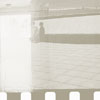 This is the eponymous debut album from Andrea Belfi (percussion), BJ Nilsen (electronics), and Simon James Phillips (piano). Recorded live in a Berlin church. the album comes across as an isolating, but effective combination of these three different artists, coming together to produce something that sounds like none of them in particular, but a whole that has its own singular sound.
This is the eponymous debut album from Andrea Belfi (percussion), BJ Nilsen (electronics), and Simon James Phillips (piano). Recorded live in a Berlin church. the album comes across as an isolating, but effective combination of these three different artists, coming together to produce something that sounds like none of them in particular, but a whole that has its own singular sound.
The trio used the resonant space of the venue to excellent effect throughout The Swifter, with each piece bathed in a distinct, though natural reverb."End of Capstan Bars" leads off the album with a hollow, environmental clattering that has a distinct character that even the most advanced of digital reverbs could nary hope to accomplish.Because it does have such a natural quality, even when it is used heavily throughout the performance, it does not come across as cliché dark ambience.
The electronic creaking and popping textures of "End of Capstan Bars" are paired with more organic piano and brushed percussion, coming together as distinctly different take on minimalist jazz fusion."Neap Tide" has a repetitive piano and distant percussive sounds that are less musical and more environmental, having a sparse, yet beautiful arrangement.
"Swallow" is less about subtlety and instead focuses more on shambling and muffled percussion from Belfi, while Nilsen's electronic mangling comes out sounding like popping pop corn.Amidst a hollow, low frequency drone, piano and unconventional rhythms balance each other out in a strange, tense equilibrium, resulting in a surprisingly delicate sound before increasing in intensity in its latter moments.
"Wave Guidance Allows Three" is where the understated sensibility gets tossed by the wayside, with a grandiose, massive piano sound dominating, accentuated by percussion and what sounds like a simple rhythmic synth sequence.While the boisterous piano leads, it is soon deposed by the percussion taking the lead, locking everything into a vaguely krautrock groove while the piano piles up into a lush background texture.
This debut is intrinsically tied to its setting and performance, which may or may not be an important factor in future recordings.The isolationist, rhythmic quality to the sound is inviting, even though it is an obtuse approach to music.
samples:
 
Read More
- Administrator
- Albums and Singles
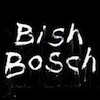 Atrocities, dictators and bodily functions, these are a few of Scott Walker’s favorite things. Throughout the dense lyrical jungle of Bish Bosch are examples of all these subjects amid dozens of other topics, all processed through Walker’s intense imagination. At times bewildering, amusing and disturbing, this is a magnificent album that continues from the same point where The Drift left off.
Atrocities, dictators and bodily functions, these are a few of Scott Walker’s favorite things. Throughout the dense lyrical jungle of Bish Bosch are examples of all these subjects amid dozens of other topics, all processed through Walker’s intense imagination. At times bewildering, amusing and disturbing, this is a magnificent album that continues from the same point where The Drift left off.
It is difficult to say exactly where I stand with it. I love it but there is a multitude of readings into the title alone (a combination of slang, Heironymous Bosch and a mythical female giant artist are implied on the album’s official site). I can only imagine that there will be years of analysis left in Walker’s words here. This is songwriting for an age of information overload as the thickets of puns, allusions and obscure facts bring to mind James Joyce’s work with Finnegans Wake. Walker moves through ideas like I would idly pass the time on Wikipedia, clicking the links until the dawning realization that I have gone so far without a breadcrumb trail to lead me back.
All the while, Walker is accompanied by many of his usual partners in crime along with a huge number of ancillary musicians, some of whom might only have seconds of play time on Bish Bosch. Yet, this is not the marathon run of kitchen sink instrumentation that that was present on The Drift. Here, the instrumentation is much more conventional but the playing and moods that are pulled out of the string section or guitar player are a step out of the ordinary. Going from weird concrète electronics to a vivacious carnival-style percussion, the players do an excellent job of accompanying such an uncompromising musical vision. Walker’s line on "Dimple" of "If you’re listening to this, you must have survived" could easily be directed to a participant in one of his recording sessions.
While the music is incredible in its own right, there is no denying that it is subservient to the words. Walker’s lyrics act like cues for sounds to be included in the music and Bish Bosch is as indebted to radio theater as it is to any of the other myriad of sources and inspirations that Walker has drawn on. Uses of the word "chisellers," "wobble," and "A room full of mice," are all accompanied by the appropriate sound effect; in particular, the latter has what sounds like a snare drum put into one of those little exercise wheels found in pet stores. The strong link between the words and the music means that traditional melody takes second stage to psychological and semantic impact. These songs are written in order to get deep inside each listener, not by a catchy hook but by possession.
There is a particularly scatological leaning to the words and sounds utilized; the oddness of Walker’s Donald Duck impression on The Drift is totally eclipsed by the line "The sphincter’s tooting our tune," accompanied by a flatulent synthesizer on "Corps de Blah," (the title possibly inspired by the phrase "corps de ballet," as Walker started work on this album while working on music for a ballet company). Meanwhile, references to a "wormy anus" and "If shit were music… you’d be a brass band" continue the theme in simultaneously cutting and hilarious ways.
These indelicate references and the countless mentions of mental illness and inhumane acts ("What kind of an unnatural son would do that to his own mother!?!") make the Heironymous Bosch connection in the album’s title most apparent during these early listening sessions. The intricate and varied horrors spill out of the speakers like one of Bosch’s compositions falls out of the canvas; just when I feel I have reached the depths of Walker’s unsettling (and frequently hilarious) imagery, he pushes the boundaries even further. "I’ve severed my reeking gonads and fed them to your shrunken face" is not the sort of lines expected from a 69-year-old former '60s icon, even one who has previously sang about punching a donkey in the streets of Galway. This line, alone with other remarks about genital mutilation or eunuchs, complete Walker’s idea of a Bitch (Bish) version of Bosch.
It remains difficult to discern what else is lurking beneath the surface of Bish Bosch at such an early time. Knowing how much I have discovered from (and still discover of) Walker’s previous albums over time, I am looking forward to dissecting Bish Bosch for years.
samples:
 
Read More
- Administrator
- Albums and Singles
 After a tantalizing two-year trickle of 12" singles and an EP, this unrelentingly bleak UK post-industrial duo have finally released a full album.  It was an event that I awaited with a mixture of anticipation and dread, however, as Raime had announced earlier that they had moved towards employing mostly live instrumentation, a decision that has historically not gone well for most electronic artists.  It certainly went well here though, as this is easily Raime's finest effort to date and a truly impressive evolution besides.
After a tantalizing two-year trickle of 12" singles and an EP, this unrelentingly bleak UK post-industrial duo have finally released a full album.  It was an event that I awaited with a mixture of anticipation and dread, however, as Raime had announced earlier that they had moved towards employing mostly live instrumentation, a decision that has historically not gone well for most electronic artists.  It certainly went well here though, as this is easily Raime's finest effort to date and a truly impressive evolution besides.
I have long been amazed by Raime's relative popularity, as it seems like they have always been quite intent on being as cold and alienating as possible since their inception.  Aside from the generally dank, claustrophobic, and airless feel of their work, they seem to be post-everything, eschewing anything resembling hooks or propulsive rhythms in favor of gloomy atmospheres and oddly shivering, slow motion beats.  Perversely, Quarter Turns takes some of those tendencies to an even further extreme while also unexpectedly dissipating the duo's characteristic suffocating darkness a bit.
On the "maximizing alienation" front, Joe Andrews and Tom Halstead have taken their already sparse, anxious beats into an even less danceable place this time around.  While a couple of pieces maintain the skittering, dubstep-inflected beats of their previous releases, like "The Last Foundry" (a superior reprise of The Raime EP's "This Foundry"), most of the others are based upon a straightforward, glacial thump that is far more "death march" than "dancefloor".  The opening "Passed Over Trail" is subversive in yet another way, dispensing with a beat entirely, but offering some awesomely shuddering and distressed sub-bass in its place.
While I certainly enjoy such acts of genre subversion and stylistic contrarianism, this album would get boring very fast if that was the sole extent of Raime's evolution.  Fortunately (and much to my surprise), the switch to live instrumentation provides the perfect counterbalance to the duo's escalating aversion to rhythm.  In fact, Raime do not make a single false, clumsy, or unnecessary instrumental move.  The mood, of course, remains as blackened as ever, but the subtle intrusion of human warmth and organic textures provides a necessary contrast that has been missing up until now, as the combination of sparse bleakness and bloodless artificiality was a bit too much for me to take in any kind of large dose.
The most beautiful manifestations of this new balance come at the end of the album.  In "Your Cast Will Tire," rattling, bowed guitar strings provide a sharp and visceral backbone while a mutant waltz beat and the coloration in the periphery create a deliciously escalating tension.  Then, in "The Dimming of Road and Rights," a simple violin motif unfolds over a lurching thump and an ominous repeating bass note.  While it does not replicate the satisfying dynamic trajectory of its predecessor, it maintains a fragile and eerie beauty for its entire duration and offers some extremely cool and creative flourishes besides, like the occasion snarl of something halfway between guttural human speech and guitar noise or the presence of a second beat that sounds too distant to actually be part of the song.
While those highlights admittedly occur quite deep into the album, Quarter Turns is a remarkably strong, varied, listenable, and intelligently sequenced whole.  There are a few instances where pieces take time to build, but the pay-off is always inevitably worth the wait as each of these seven songs are successful and memorable in their own way.  In most cases, that way is textural, as Andrews and Halstead are able to wrestle some impressively gnarled and scorched noises out of their instruments and they are clever enough to provide ample space for their ingeniously ravaged sounds to be properly heard and felt.  In fact,  I doubt there is anything that could be improved about this album.  It is almost certainly too skeletal and shadowy to offer much in the way of widespread appeal, but I am sure Raime have no interest in that at all–they accomplished exactly what they wanted to do masterfully, hauntingly, and distinctively.  This is a serious contender for my favorite album of the year.
 
 
Read More
- Administrator
- Albums and Singles
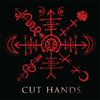 A surprisingly fast follow-up to the Afro Noise I album, Black Mamba already demonstrates an even further evolution of William Bennett's post-Whitehouse career, one that sees his work being utilized in documentaries about drugs and Snoop Lion (formerly Dogg).  While there was an overt intensity to the first album, via the rapid, claustrophobic drumming and dense atmospheres, here things are a bit more understated and pensive, but no less fascinating.
A surprisingly fast follow-up to the Afro Noise I album, Black Mamba already demonstrates an even further evolution of William Bennett's post-Whitehouse career, one that sees his work being utilized in documentaries about drugs and Snoop Lion (formerly Dogg).  While there was an overt intensity to the first album, via the rapid, claustrophobic drumming and dense atmospheres, here things are a bit more understated and pensive, but no less fascinating.
Susan Lawly/Very Friendly
Afro Noise I was a lightening rod for a significant amount of criticism regarding Bennett's appropriation of African and Haitian percussion as being exploitive for a Western artist.While I could never wrap my head around that fully, it felt influenced by those genres without co-opting them as his own.On Black Mamba, this is even less of a potential criticism:the percussion throughout often takes a back seat to layers of spacious synths, but never is it fully out of the picture.
The title track and "Erzulie D'en Tort" are more consistent with the first Cut Hands release, intermingling the different percussive instruments into complex poly-rhythmic tapestries that speed up and slow down with a natural grace and fervent intensity."Brown-Brown" also leans in similar directions, mixing the clattering rhythms together to create an intricate, hypnotic mix.
"Krokodilo," named for a lethal Russian drug (and featured in a recent documentary on the same), is a perfect example of the evolution to be heard on the album:the slower, more sparse rhythms are paired with synth strings that give it an almost Eastern European folk feel, perfectly suiting the subject matter."No Spare No Soul" piles on the African percussion, but mixed with bits of distorted and noisy bits of electronic noise that lead it into more dance floor oriented lands.
The more experimental moments are especially strong as well:both of the Nzambi lamentations have a dramatic, film score quality that stand out as sad, occasionally abrasively shrill moments that expertly convey a variety of moods."Kongo" is a short, wide-open piece that pairs metallic shaking with erratic drum blasts that sound like distant fire from a warlord’s AK.
The opening track is the one that stands out as the most potentially out of place:pulsing tones and hypnotic repetition with a calm, almost robotic female spoken word piece.Originally part of Bennett’s Neuro-Lingusitic Programming project, it is a departure from the otherwise percussion-heavy sounds, but also shows that Cut Hands is not locked into that specific niche either.
Black Mamba is not a drastic departure from Afro Noise I, but comes across as a more nuanced, evolved work that is definitely inspired by indigenous music of Africa, but further cements the notion that this is not an exploitation, but a celebration of the art and culture Bennett has a passion for.With a wider sonic palette that embraces synths and electronics as much as percussion, it’s a less intense, but overall richer experience.
samples:
Read More


